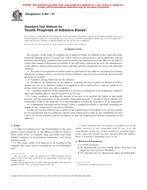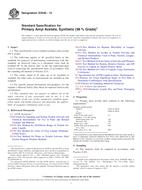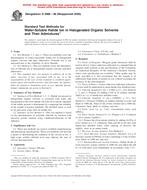1.1 This test method, which is similar to thermal analysis techniques, establishes a procedure for determining flammability characteristics of combustible materials such as plastics.
1.2 The test is conducted in a laboratory environment using controlled heating of milligram specimens and complete thermal oxidation of the specimen gases.
1.3 Specimens of known mass are thermally decomposed in an oxygen-free (anaerobic) or oxidizing (aerobic) environment at a constant heating rate between 0.2 and 2 K/s.
1.4 The heat released by the specimen is determined from the mass of oxygen consumed to completely oxidize (combust) the specimen gases.
1.5 The rate of heat released by combustion of the specimen gases produced during controlled thermal or thermoxidative decomposition of the specimen is computed from the rate of oxygen consumption.
1.6 The specimen temperatures over which combustion heat is released are measured.
1.7 The mass of specimen remaining after the test is measured and used to compute the residual mass fraction.
1.8 The specimen shall be a material or composite material in any form (fiber, film, powder, pellet, droplet). This test method has been developed to facilitate material development and research.
1.9 This standard is used to measure and describe the response of materials, products, or assemblies to heat and flame under controlled conditions, but does not by itself incorporate all factors required for fire hazard or fire risk assessment of the materials, products, or assemblies under actual fire conditions.
This standard does not purport to address all of the safety concerns, if any, associated with its use. It is the responsibility of the user of this standard to establish appropriate safety and health practices and determine the applicability of regulatory limitations prior to use.
Note 1
There is no ISO equivalent to this test method.
Product Details
- Published:
- 04/01/2007
- Number of Pages:
- 8
- File Size:
- 1 file , 120 KB


